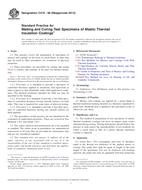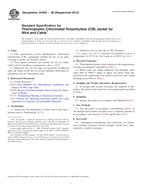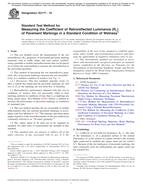1.1 This practice covers procedures for the dynamic verification of cyclic force amplitude measurement accuracy during constant amplitude testing in an axial fatigue testing system. It is based on the premise that force verification can be done with the use of a strain gaged elastic element. Use of this practice gives assurance that the accuracies of dynamic force readings from the test machine, at the time of the test, after any user applied correction factors, fall within the limits recommended in Section 9. It does not address static accuracy which must first be addressed using Practices E 4 or equivalent.
1.2 Verification is specific to a particular test machine configuration and specimen. This standard is recommended to be used for each configuration of testing machine and specimen. Where dynamic correction factors are to be applied to test machine force readings in order to meet the accuracy recommended in Section 9, the verification is also specific to the correction process used. Finally, if the correction process is triggered and/or performed by a person, then the verification is specific to that individual as well.
1.3 It is recognized that performance of a full verification for each configuration of testing machine and specimen configuration could be prohibitively time consuming and/or expensive. Annex A1 provides methods for estimating the dynamic accuracy impact of test machine and specimen configuration changes that may occur between full verifications. Where test machine dynamic accuracy is influenced by a person, estimating the dynamic accuracy impact of all individuals involved in the correction process is recommended. This practice does not specify how that assessment will be done due to the strong dependence on owner/operators of the test machine.
1.4 This practice is intended to be used periodically. Consistent results between verifications is expected. Failure to obtain consistent results between verifications using the same machine configuration implies uncertain accuracy for dynamic tests performed during that time period.
1.5 This practice addresses the accuracy of the testing machine’s indicated forces as compared to a dynamometer’s indicated dynamic forces. For the purposes of this verification, the dynamometer’s indicated dynamic forces will be considered the true forces. Phase lag between dynamometer and force transducer indicated forces is not within the scope of this practice.
1.6 The results of either the Annex A1 calculation or the full experimental verification must be reported per Section 10 of this standard.
1.7 This standard does not address the issue of a test machine’s control accuracy. It does not provide assurance that the force obtained equals the force commanded within the specified accuracy. The correlation being verified is between the test machine’s indicated force and the true force on the test specimen as measured by a dynamometer.
1.8 This practice provides no assurance that the shape of the actual waveform conforms to the intended waveform within any specified tolerance.
1.9 This standard is principally focused at room temperature operation. It is believed there are additional issues that must be addressed when testing at high temperatures. At the present time, this standard practice must be viewed as only a partial solution for high temperature testing.
Product Details
- Published:
- 05/01/2004
- Number of Pages:
- 10
- File Size:
- 1 file , 140 KB


